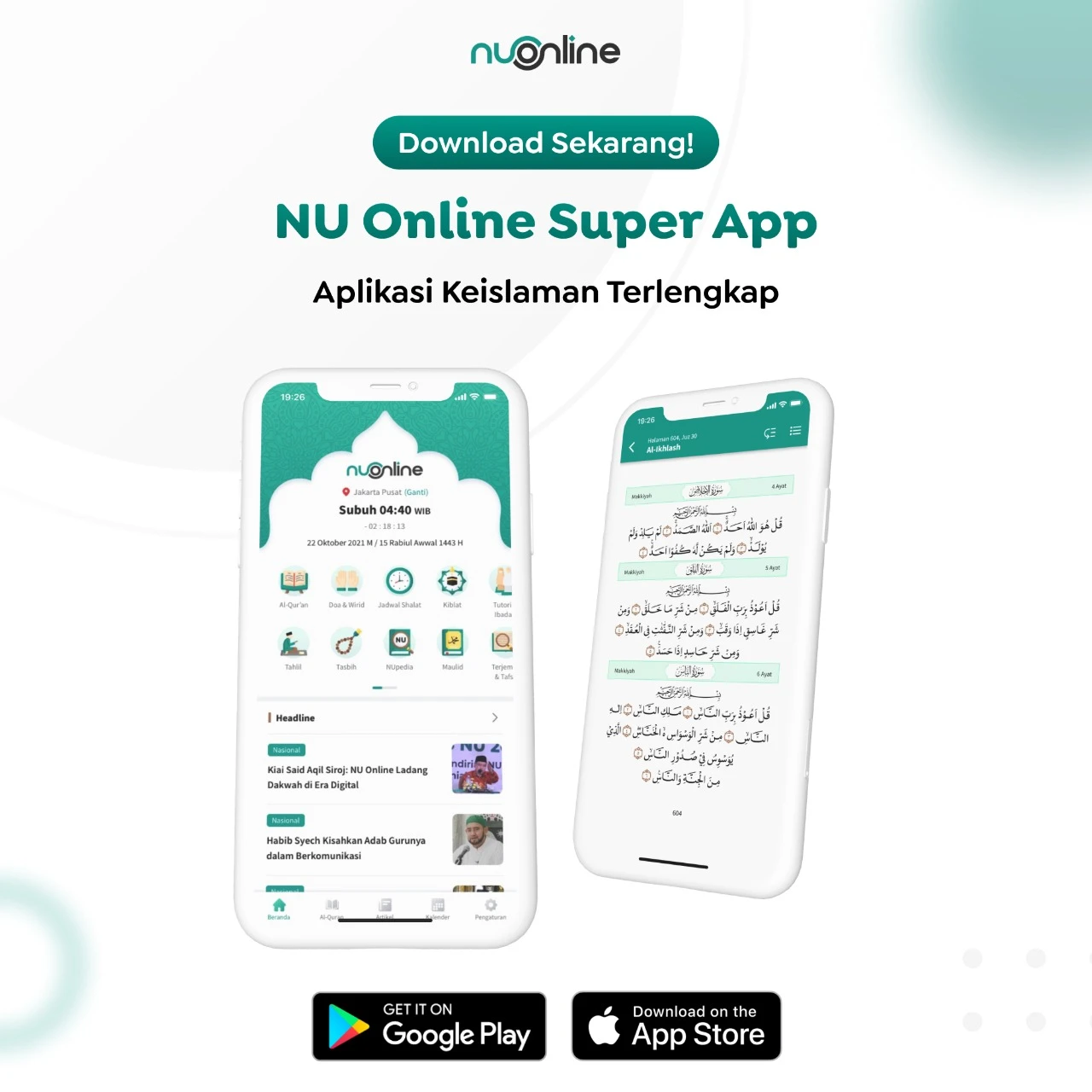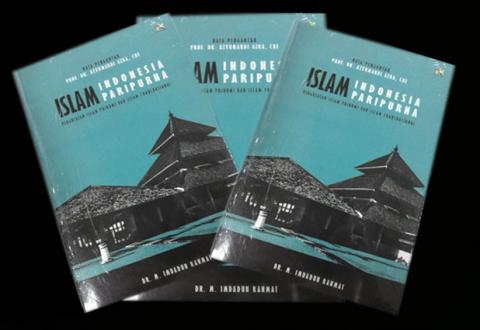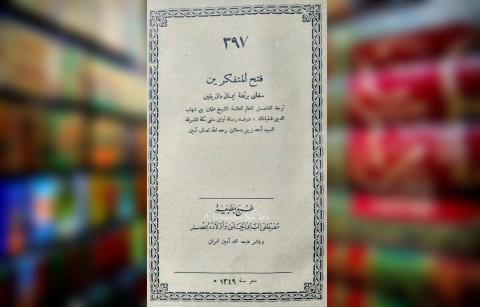Examining contemporary political Islam in Indonesia
NU Online · Senin, 1 September 2008 | 09:09 WIB
Writer : Syarifuddin Jurdi
Publisher: Pustaka Pelajar, Yogyakarta
Edition : I July 2008
Thick : xxi + 677 pages (including index)
Reviewer: Karuni Ayu Sawitri
Indonesian democratic transition in the post-reform era has change the feature of Indonesia's politics. The uncertain national conditions have made many deeply concerned and feel that it is now necessary to impose democracy, freedom, transparency, and public accountability over the nation's problems dealing with social order on such a scale. It is inevitable that any social confrontation and conflict have constantly happened. Various interests based on the nation and certain group for instance have also colored the nation's political feature.<>
The open freedom crane of expression and speech can be considered as one of supporting vehicles over the strengthening of civil society movement. This movement on one hand can bring hope for being able to endorse and stabilize the government and bring risks for being capable of threatening the national stability. The people's concern over emerging problems especially in economy, politics, and moral degradation have led public to searching for such new alternatives.
One of the alternatives is the existence of Islam political thoughts that in turn lead to any movements. Consolidations in the state level have always been made while at the same time there have been internal consolidations within Muslim circles themselves. This phenomenon can be traced from the rising of Islam political movements along with their own actual issues like the implementation of syaria, Islamic state, khilafah Islamiyah, civil society, and a wide range of movements formalizing Islam in political life.
During the New Order, the power of Islam politics had been experiencing fluctuations. In the early New Order. Islam was marginalized from the state. In the meantime Islam found many difficulties in evolving social political ideas because of the repressive New Order regime. Islam had auspicious moments as entering the last quarter of the New Order era though its interests were still cooptated by the state. (page 18-20)
In the reform era, there have been increasingly Islam political thoughts and strong reactions from various opposing parties. This condition have raised three camps within society. First, those willing to legalize Islam politics in the state's system. Those are so-called as symbolic groups holding firmly on legality models of Islamic symbols. Second, those rejecting the implementation of Islamic systems within state and considering the importance of introducing Islamic ethos or spirit within state systems. Those are called as substantialist groups. Third those differentiate between private and public sphere can not be mixed within public systems. Those are publicly called as liberal groups.
The first group is of view that the failure of Indonesian government in building a strong nation due to the system it adopts is the secular state one. For that reason it considers that Islam is a solution to any nation's problems like leadership, economy, social relationship within society and morality. Indonesian people are in need of having a way of life from Islamic values and state practices as modeled by Prophet Muhammad (PBUH). This understanding itself has produced a wide range of Islamic movements in Indonesia.
Hizbut Tahrir of Indonesia (HTI), Indonesian Majelis Mujahidin (MMI), Islamic Defenders Front (FPI), Laskar Jihad (LJ), and the Indonesian Muslim Students’ Action Union (KAMMI) are contemporary religious social political movements in Indonesia. These movements are actually not a new scene because during the Old Order there had also been similar ones. The model of Islamic movement thoughts in Indonesia has a similar characteristic that is the pursuit of legalizing Islam within social or political systems in Indonesia.
Even the HTI has strongly imposed the implementation of what called as khilafah Islamiyah (Islamic state) in Indonesia. For this group the Islamic state is a must that must be upheld. The state model dreamed by the HTI is the transnational one bordering geographic areas or beyond emerging nations' borders. The HTI's notion of state is primarily inspired by its leader Taqiyuddin an-Nabany from Palestine. It is also inspired by a state system as modeled by Prophet Muhammad (PBUH) in Madinah and then developed to be Islamic state system. While the khilafah Islamiyah alone collapsed in 1924 when the Ottoman Turk Period was destroyed by the western capitalism. (page 386)
In contrast to the HTI, the MMI considers the importance of formalizing religion within the Indonesia's social political system. At a glance, the MMI has no ideas to establish an Islamic state. But it tends to emphasize religious symbolization within the state. This feature differentiates between the HTI and the MMI in upholding Islam.
For the MMI, whoever taking a stand against the syaria (Islamic law) implementation must be countered and fought even necessarily with violence. This doctrine has, admitted or not, sparked tension between Muslims especially for moderate and liberal circles. Even the dissenting opinion has most of the time triggered religious confrontation and conflict in the country recently.
While the Laskar Jihad, FPI, and KAMMI have the same orientation as MMI. But each has different character in its own religious movements. These movements have always raised confrontation between Muslims. The confrontation between the FPI and he National Alliance for Freedom of Religion and Faith (AKKBB) at the National Monument (Monas) square on Sunday, Jun 1st, 2008.
Syarifuddin Jurdi, the writer of this book, clearly elaborates the phenomenon of the increasingly strengthening of religious political movements nowadays. The writer is a sociologist trying to examine the phenomenon not from social factors per se. Rather he will try to examine it from both political and religious factors. Here is the magnetic power of the book that explains the phenomena of Islam politics and the formalization of religion. Readers will feel satisfied in exploring Islam politics in Indonesia in the 677-page book. By reading this book, we will be able to understand on how the inter-religious conflicts have likely not yet met their end.
The reviewer is a librarian of the Lintang Songo, Yogyakarta
Terpopuler
1
Khutbah Jumat: Maulid Nabi dan 4 Sifat Teladan Rasulullah bagi Para Pemimpin
2
Jadwal Puasa Sunnah Sepanjang Bulan September 2025
3
DPR Jelaskan Alasan RUU Perampasan Aset Masih Perlu Dibahas, Kapan Disahkan?
4
Pengacara dan Keluarga Yakin Arya Daru Meninggal Bukan Bunuh Diri
5
Tata Cara Shalat Gerhana Bulan, Lengkap dengan Niat dan Surat yang Dianjurkan
6
Khutbah Jumat: Menjaga Amanah dan Istiqamah dalam Kehidupan
Terkini
Lihat Semua















